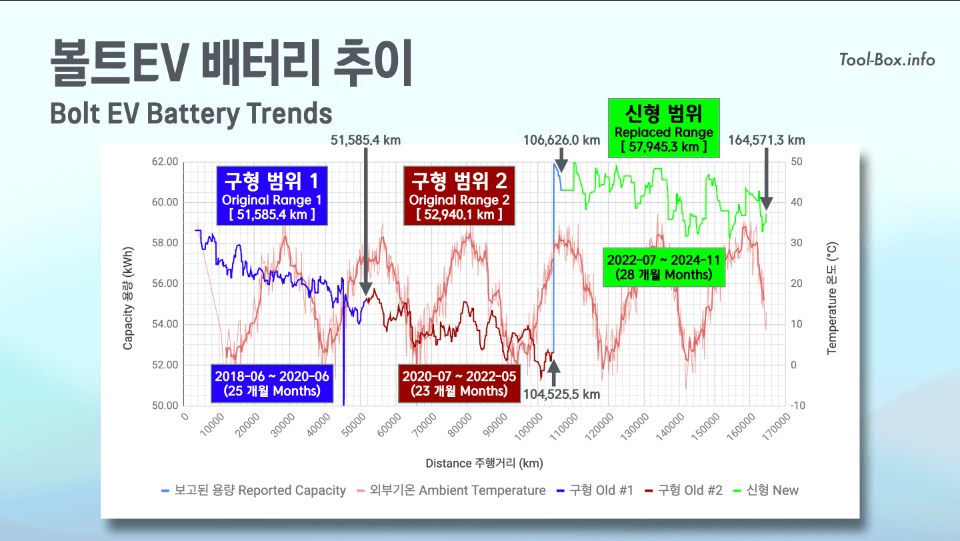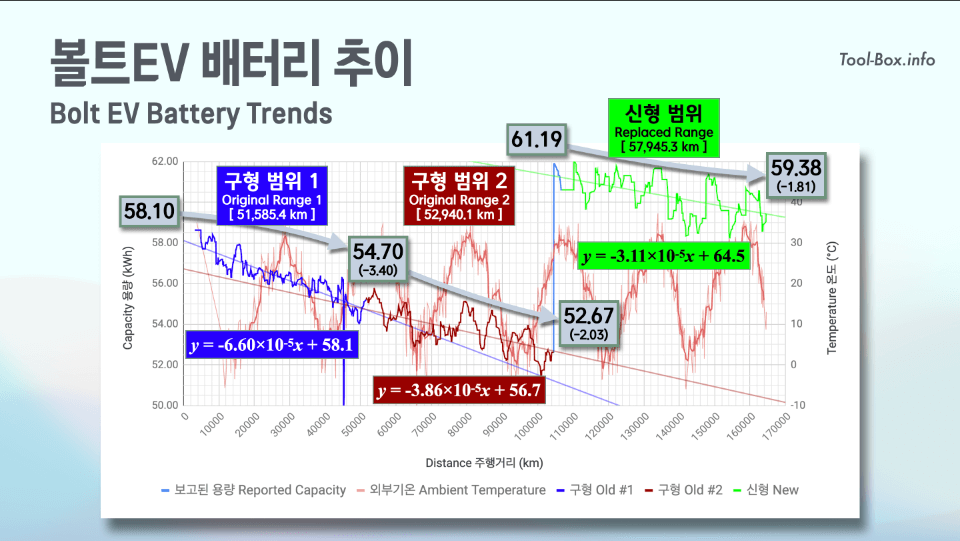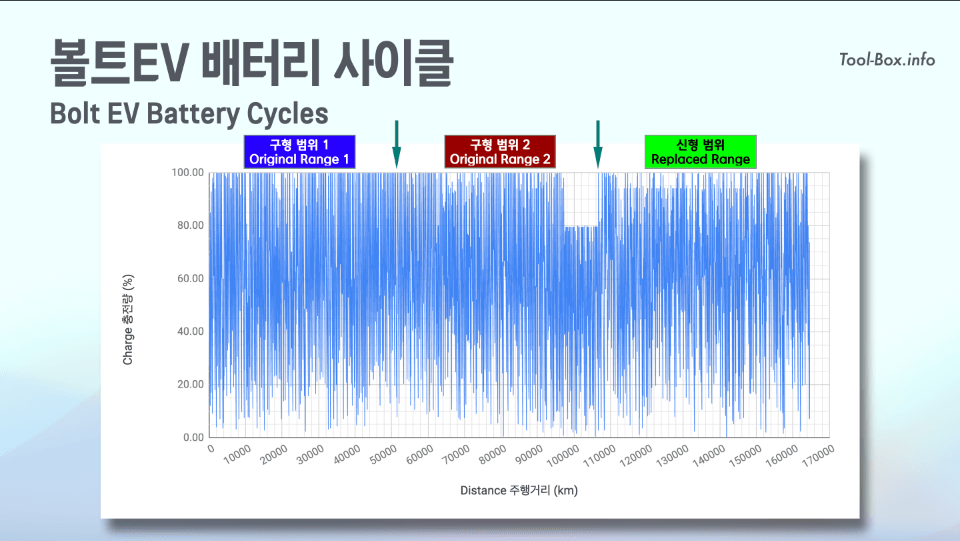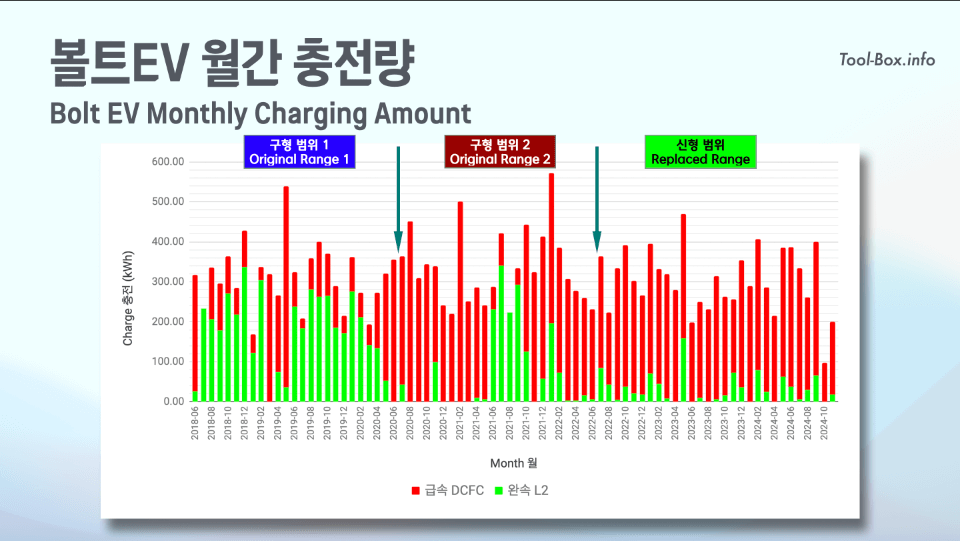Comparing Bolt EV's old and new batteries on degradation
Posted by Wesley onAlong with my Bolt EV passing the 160,000 km milestone, the new battery that came with the recall has logged more than two years and 57 thousand kilometers of use. So it was a good time to check on how its performance compares to the original battery. The video I uploaded at YouTube on this topic covers everything including how the data was obtained, but I'll cut to the chase here. The data for the old battery is divided into two ranges, the first part that spans 25 months and 51,585.4 km, and the second part that covers 23 months and 52,940.1 km. The new battery's data is treated whole, totalling 57,945.3 km and 28 months.
The division on the old makes it ideal to explain its degradation trend in just two linear polynomials, and also is close to a single quadratic or cubic counterpart for the scope in question. The results showed that the degradation of the old battery in its first two years was steep, amounting to about 0.660 kWh of loss every 10,000 km. In contrast, the new battery was doing much better at about 0.311 kWh per the same distance. While the degradation slowed down for the old one in the subsequent years, it was still worse than the new one's initial performance. So it's evident that the new battery is much more resilient.
To make sure that I introduce as little variable as possible to this observation, I have kept the charging / discharging habit consistent to this day. The battery would be charged up to 100% if the opportunity allows it, and I have often drained it to 10% or less in many occasions. The only exception happened when one of the recalls capped the maximum state of charge to 80% for a few months. But this did not have any apparent affect in the degradation pattern.
On the other hand, charging regimen shifted from being slow charging oriented in the first two years to going reliant largely on the fast chargers later on. This meant that the worst degradation happened when I was using slow chargers most of the time, which goes against the conventional wisdom that slow charging benefits the battery's lifespan. This does mean that the Bolt EV's fast charging speed isn't really fast enough to adversely affect the battery.
Overall, I think the new battery is performing great. If it keeps up, I would need to drive a total of 394,000 km on it (or 500,000 km total) for it to degrade to 80% of the initial capacity. While I might not be keeping this car for that long, I plan to see if the trend itself holds up in about two years' time when it matches the duration and distance of the original.



